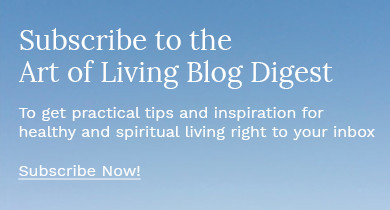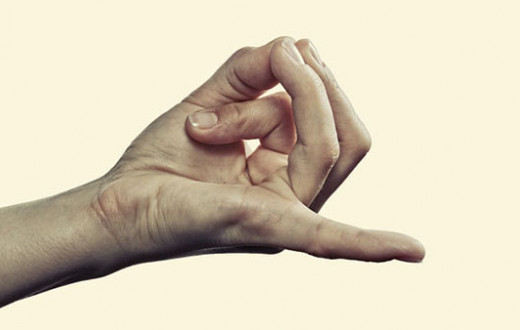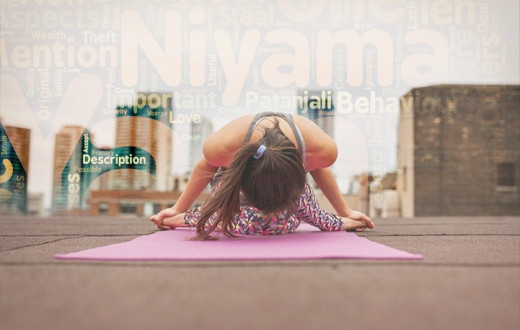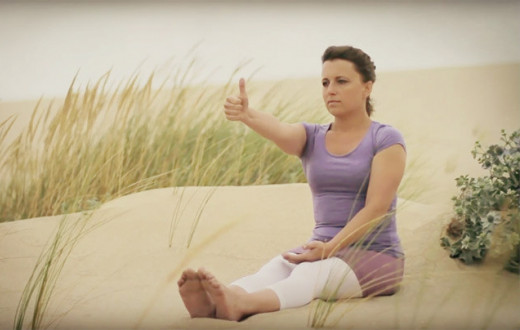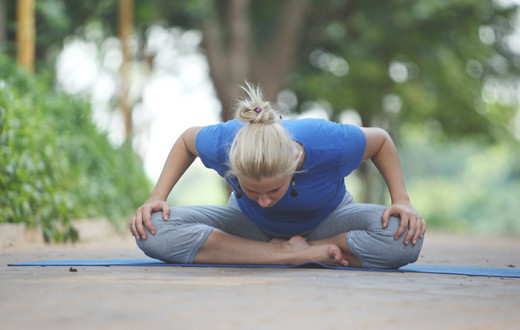By Elizabeth Herman
Discover how you can use the ancient wisdom of yoga for stress and anxiety relief, plus a simple sequence you can try at home!
Researchers say that anxiety and stress currently affect millions of Americans. Most people feel a little bit anxious from time to time. But it becomes a disorder when anxiety increases and interferes with day-to-day life.
Many health publications list yoga as a top recommendation for anxiety relief. Whichever way you approach yoga, there's a supportive way to use it in everyday life. You can be sure that starting a yoga practice will give you a wide variety of ways to reduce your stress and anxiety.
Can yoga help treat anxiety?
Yoga is one of the best natural ways to stop worrying. A 2020 study showed that yoga improved anxiety symptoms. Dr. Naomi Simon, M.D. said "there's significant value for people with anxiety disorders to see if yoga works. Yoga is well-tolerated, accessible, and has many health benefits." Another study discussed yoga’s “effective role in reducing stress, anxiety, and depression.”
Yoga postures provide an easy and effective form of physical exercise. Yoga also has anxiety reduction built into its philosophy. As stated by the Minded Institute, “yoga allows people to become aware of the link between their minds and bodies in a way which can help them become less anxious.” Related practices, such as pranayama and meditation, involve both the breath and mind. These can work even without a full-blown physical yoga session.
The benefits of yoga accumulate over time. The longer and more often you practice, the more benefits you’ll receive. You'll notice anxious thoughts disappearing as you adopt yoga into your life. Then, there'll be more time to pursue your goals without fearing any snags or glitches that may come along.
Yoga is holistic, so it helps physical, mental, and emotional issues. While you practice yoga poses, you follow instructions that help you relax in your mind and heart as well.
Why yoga for stress relief?
Yoga has no side effects like medications. You can practice several forms of yoga anywhere, at any time. You can incorporate it into any schedule or lifestyle, no matter how hectic.
Learning yoga is inexpensive, easy to access, and pleasurable. Once you learn it from a trained teacher, you can practice it outside of class according to your own needs.
Yoga is a lifelong practice bringing lifelong benefits. You'll grow as a yogi as long as you continue to practice. Meeting others who share your interests can be like "yoga therapy," in a less formal, social sense. It can reduce muscle tension when you share your source of joy with those who understand it.
Another (perhaps unexpected) benefit of yoga is that your social relationships improve as your stress and anxiety reduce. Anxiety can make relating to others incredibly difficult. So as you feel less anxious and more confident, connecting with others becomes easier. In this way, you can establish better relationships and happier feelings. For example, most participants gain self-awareness and body awareness from yoga sessions. Those increases in awareness can give you more confidence. You'll be able to help colleagues and friends with bigger challenges. Others will feel inspired by positive changes in your stress levels. They'll notice how you overcome any panic attacks that you once had before learning yoga.
How does yoga help with stress and anxiety?
Yoga postures and breathwork stimulate relaxation hormones in your body. Known as pranayama, breathing techniques form an important part of every yoga session.
Yoga helps you focus on the present moment. When you pay attention to each one of your breaths, you become aware of every passing second. You can stop worrying about the future, and stop regretting the past. You also gain psychological strength and resilience.
Yoga uses breathing and meditation in harmony with postures. This makes yoga so holistic. It's your whole being. Every movement and every pose reflects confidence and grace thanks to your breath. Traditionally, yoga wasn’t just the physical postures, but also included pranayama (breathing techniques). By working with the breath, you’re able to achieve wonderful results. Like reducing anxiety and depression, improving sleep, and even managing PTSD. Breathwork is often overlooked in modern yoga classes, but adding breathwork to your yoga practice, or doing it by itself, can lead to great results.
Breathwork with awareness during yoga classes can be a starting point. You begin here to learn a variety of pranayama. With an Art of Living Happiness Program, you learn the powerful SKY Breath Meditation. This technique can become your bridge to freedom. With it, you can see beyond emotional stress and anxious thoughts.
Pranayamas
A crucial key to yoga's success against anxiety is breathing techniques. You can use Ujjayi (victory) breath, deep, yogic, belly breathing, and alternate nostril breathing anytime. They're simple to learn and so effective when used as needed.
What yoga poses help anxiety?
Child pose (Shishuasana). Gain the ultimate rest and relaxation in the child’s position. Relieve tension in your head by massaging your forehead on your yoga mat. Stretch your arms out in front of you for added relief in the shoulders and neck.
Neck rolls (Kantha Sanchalana). With gentleness, take the kinks of tension out of your neck. Every workday gives your cervical spine a reason to stress out. So attend to it with soft stretching and flexing!
Cat and Cow Stretch (Marjariasana). Flexing and extending your torso can energize your spine. The intentional shifting helps you breathe in sync with your movement. That gentle motion releases and relaxes your cyclical pattern of worry!
Downward Dog (Adhomukha Svanasana). A stronger upper body and more blood circulation to the brain help you relieve stress in this pose. With alternating lower leg movements, you can stop worrying and feel the stretch in your legs.
One-legged forward bend (Janu Sirsasana). This seated head-to-knee pose helps you start to twist your spine and stretch your entire body. Allow the anxiety to flow out through one extended leg at a time!
Two-legged forward bend (Paschimottanasana). A two-legged forward bend is a relaxing, seated forward fold. It helps to calm your nervous system (and your nerves)!
Bow Pose (Dhanurasana). You can open up the chest and the front of the body with this deep backbend. Immediate relief from stress washes over you! Starting prone on your tummy, hold your ankles, and energize yourself!
Shoulder stand (Sarvangasana). This inverted posture will strengthen your heart muscles, arms, and shoulders. It will increase blood flow to the brain. With your body weight off of your neck, relax your anxiety in this pose often!
Bridge Pose (Setu Bandhasana). This energizing backbend resembles a bridge. It calms the nervous system and expands the lungs. You can stretch the tension out of your neck and shoulders in this pose.
Fish Pose (Matsyasana). This pose opens the chest and encourages deep breathing. It relieves tension in the neck and shoulders and strengthens the upper back. Your whole upper body will be too relaxed to worry!
Corpse Pose (Shavasana). The ultimate restorative posture is the best way to finish a relaxing yoga session. By tensing and releasing all your muscles one by one, and then letting go, you absorb the benefits of your practice.
Browse our entire yoga poses library, or attend our yoga course for more about each yoga pose in detail. If you have an interest in becoming a yoga teacher, click here for more information.
A regular yoga practice can result in improved health. But it can’t replace medical treatment. It is important to learn and practice yoga under the supervision of a trained teacher. In the case of a medical condition, practice yoga after consulting a doctor.
Check out Beyond Breath - A FREE Breath and Meditation Online Session With a Live Instructor. You’ll start to learn about SKY Breath Meditation. It has helped millions of people around the world.
Elizabeth Herman is a long time meditator, a trained yoga teacher, and a PhD in English, with concentrations in Rhetoric and Composition, and Literature. She offers writing support to clients, teaches locally, and volunteers for a better world.

